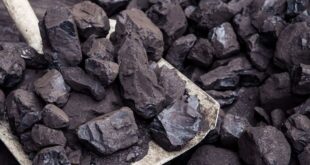Asia’s first cylindrical floating production, storage and offloading (FPSO) facility, the Haikui No. 1, approaches completion after the successful connection of its 12th mooring cable at the Liuhua oilfield in the Pearl River Mouth Basin in the South China Sea on Monday.
The FPSO facility, a cornerstone of offshore oil and gas processing projects worldwide, stands as a versatile platform for crude oil production, storage and export, defining the forefront of global offshore energy development.
Crafted by Chinese experts, the Haikui No. 1 embodies a leap forward in the nation’s deep-water, ultra-large offshore oil and gas equipment realm. Comprising nearly 600,000 intricately assembled components, this colossal structure is about 30 stories high and weighs about 37,000 tonnes.
With a maximum displacement of 100,000 tonnes and an oil storage capacity of 60,000 tonnes, the facility is poised for continuous operation at sea for 15 years, facilitating the processing of up to 5,600 tonnes of crude oil per day.
Groundbreaking high-tech project
Wang Huoping, deputy general manager of the Liuhua oilfield development project under the Shenzhen Branch of China National Offshore Oil Corporation (CNOOC), told China Media Group (CMG) the groundbreaking nature of the Haikui No.1 project.
“It marks China’s maiden endeavor in reconnecting a cylindrical offshore platform at sea. Recognizing the challenges posed by the structure’s high center of gravity and instability, a robust multi-point mooring system was employed. This system features 12 meticulously engineered mooring cables, each exceeding a length of 2,500 meters, ensuring the secure anchoring of the Haikui No. 1 to the seabed,” said Wang.
To ensure the steadfastness of the connection, a comprehensive array of underwater and surface positioning systems has been deployed. Leveraging cutting-edge digital 3D simulation technology, personnel could closely monitor the condition of underwater mooring cables and anchor chains in real time.
Wang Hui, deputy general manager of Liuhua oilfield general contracting project of Offshore Oil Engineering, told CMG of the unique challenges encountered during the Haikui No. 1’s deployment in waters exceeding 300 meters in depth, where fluctuating wind patterns and intricate sea conditions presented formidable construction hurdles.
“In response to these challenges, we mobilized a versatile engineering vessel equipped to navigate depths up to 3,000 meters. Underwater operations were meticulously executed by our team of ‘deep-sea astronauts,’ who adeptly maneuvered remotely operated underwater robots to precisely locate and retrieve anchor chains from the seabed, facilitating seamless connection onto the vessel’s deck. This strategic approach ensured the connection process was carried out with unparalleled efficiency and precision,” Wang added.

 Iran Energy News Oil, Gas, Petrochemical and Energy Field Specialized Channel
Iran Energy News Oil, Gas, Petrochemical and Energy Field Specialized Channel



